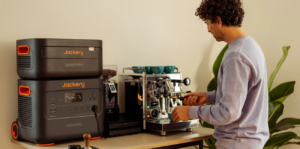Will Balloons Pop in Heat

Balloons, those colorful, inflatable orbs of joy, are a staple at celebrations, parties, and events. While they bring a sense of festivity and playfulness, have you ever wondered if these cheerful decorations are susceptible to the heat around them? The question arises: Will balloons pop in heat? To unravel this mystery, we delve into the science behind balloons, exploring the factors that contribute to their vulnerability in warm conditions.
The Role of Temperature:
Temperature plays a pivotal role in determining the fate of balloons. The relationship between heat and balloons is complex and influenced by several factors, including the type of material, the quality of the balloon, and the temperature variation. Balloons are commonly made from latex or mylar, and each material reacts differently to changes in temperature.
Latex Balloons:
Latex balloons, crafted from natural rubber, are the more traditional choice for celebrations. These balloons are porous, allowing air and helium to escape slowly over time. When exposed to heat, the molecules within the latex balloon expand, causing the balloon to inflate further. While this can create a visually appealing effect, excessive heat can accelerate the expansion, leading to increased pressure within the balloon.
The increased pressure is a result of the intensified molecular movement in the heat, making the latex balloon more prone to popping. In extreme cases, such as direct exposure to sunlight or proximity to a heat source, the pressure may become too much for the balloon to handle, causing it to burst.
Mylar Balloons:
On the other hand, mylar balloons, made from a type of metallic polyester film, exhibit different behavior when subjected to heat. Mylar is non-porous, meaning it does not allow air or helium to escape as readily as latex. While mylar balloons can withstand higher temperatures compared to latex balloons, they are not entirely immune to the effects of heat.
As the temperature rises, the gas inside the mylar balloon expands, increasing the internal pressure. Unlike latex, mylar is less elastic, which means it has a lower tolerance for pressure. Prolonged exposure to heat can cause the mylar balloon to weaken, and in extreme cases, it may succumb to the pressure and pop.
Quality Matters:
Apart from the material, the quality of the balloon is a crucial factor in determining its resistance to heat. Higher quality balloons are often manufactured with greater precision, using materials that are more resilient to temperature changes. Cheaper or poorly-made balloons may lack the durability needed to withstand heat, making them more susceptible to popping.
Environmental Conditions:
The surroundings in which balloons are placed also influence their susceptibility to heat. Direct exposure to sunlight, proximity to heat sources like lamps or heaters, and even the reflective surfaces in an indoor setting can all contribute to the rise in temperature around balloons. Outdoor events, particularly those in hot climates, pose a greater risk to the integrity of balloons due to the intensified heat from the sun.
Preventive Measures:
While the science behind balloons popping in heat is intriguing, there are measures one can take to minimize the risk of balloon mishaps during warm weather conditions.
- Opt for Mylar Balloons: If you’re hosting an event in a hot environment, consider using mylar balloons instead of latex. Mylar’s non-porous nature makes it more resilient to heat-induced pressure.
- Use High-Quality Balloons: Invest in high-quality balloons from reputable manufacturers. These balloons are designed to withstand various environmental conditions, including changes in temperature.
- Avoid Direct Sunlight: If possible, position balloons away from direct sunlight. Shade or indoor settings can help regulate the temperature around the balloons, reducing the risk of overheating.
- Monitor Inflation Levels: Be mindful of how much you inflate the balloons. Overinflating them, especially in a warm environment, increases the internal pressure and the likelihood of popping.
- Consider Alternatives: In extremely hot conditions, consider alternative decorations that are less susceptible to temperature changes. This could include decorations made from materials that are more heat-resistant.
Conclusion:
The question of whether balloons will pop in heat unveils a fascinating interplay of scientific principles and material characteristics. Understanding the behavior of latex and mylar balloons in response to temperature fluctuations allows us to take preventive measures and ensure the longevity of these delightful decorations. So, the next time you plan an event, keep in mind the science behind balloons, and let the festivities continue without any unexpected bursts of excitement.





